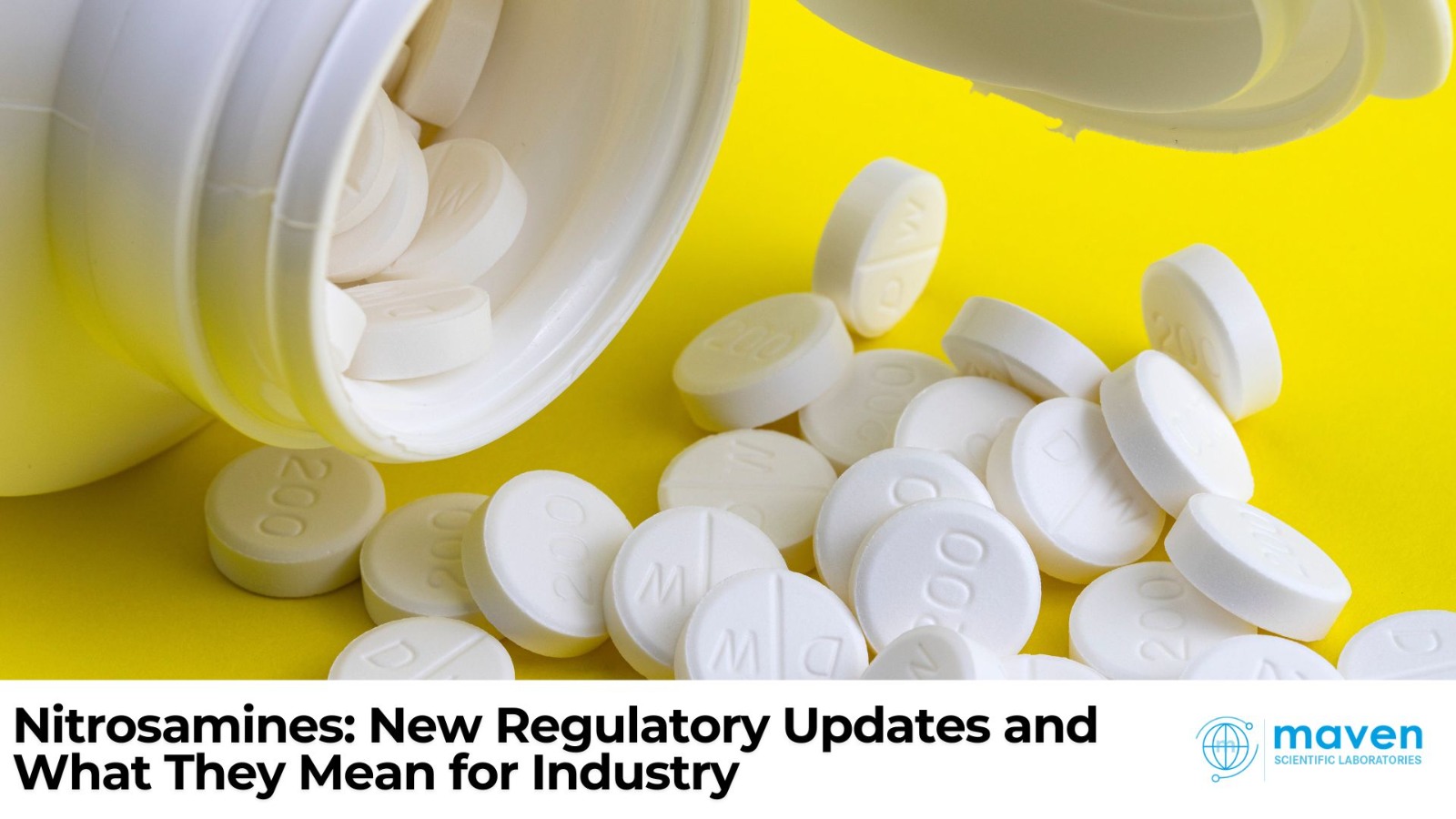Nitrosamines: New Regulatory Updates and What They Mean for Industry
June 02, 2025
Nitrosamines are getting a lot of attention from regulators because some of them can cause cancer. In 2025, the US FDA and the EU introduced new rules to limit nitrosamines in drugs and food. These rules affect drug makers, food companies, and help protect consumers.
What Are Nitrosamines and Why Worry About Them?
- Nitrosamines are chemicals that can form during manufacturing, storage, or from certain ingredients.
- Some nitrosamines are probable cancer-causing agents, meaning even small amounts over time may increase cancer risk.
- They have been found in widely used drugs and foods, leading to recalls and stricter regulations worldwide.
Latest Regulatory Updates
United States: FDA Limits
- Deadline: August 1, 2025 – all drugs in the US must meet new Acceptable Intake (AI) limits for certain nitrosamines.
- Product-specific limits:
- Nortriptyline capsules (N-nitroso-nortriptyline): 600 ng/day
- Ciprofloxacin tablets (N-nitroso-ciprofloxacin): 12,000 ng/day
- Risk assessment & testing: Manufacturers must check their products, test for nitrosamines, and find the root cause if detected.
- Reporting: Any changes to processes or specifications must be reported to the FDA. Non-compliance can lead to regulatory actions.
Europe: Food Controls
- Nitrite/nitrate limits lowered to reduce nitrosamine formation in processed meats (effective October 9, 2025):
- General meat products: 80 mg/kg (down from 150 mg/kg)
- Sterilized meat products: 55 mg/kg (down from 100 mg/kg)
- Impact: Food companies must reformulate, monitor nitrite/nitrate levels, and comply with sales in the EU.
Why These Changes Matter
- Consumer safety: Lowering nitrosamine exposure reduces cancer risk.
- Regulatory risk: Failing to comply can lead to recalls, fines, and lost market access.
- Industry responsibility: Companies must check risks, update processes, and keep records.
Key Steps for Industry
- Risk Assessment: Check all raw materials, manufacturing steps, and final products for nitrosamines.
- Sensitive Testing: Use accurate methods to detect even tiny amounts.
- Mitigation: Adjust processes, change suppliers, or reformulate to stay within limits.
- Document & Report: Keep records and notify regulators of changes.
- Stay Updated: Follow new rules in all markets where products are sold.
Conclusion
Nitrosamine rules are getting stricter, with new limits and deadlines in 2025. Companies must act early to comply, protect consumers, and maintain trust. Ongoing monitoring and improvements will be needed as regulators continue to refine safety standards.


Post a comment